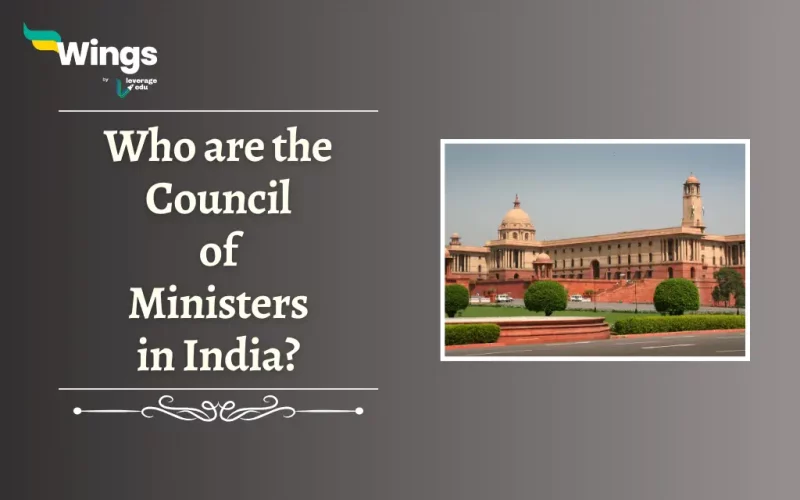The Council of Ministers is the Highest Executive organ in some governments. People misunderstand the term Cabinet as related to this Council since it is the closest relatable term. Furthermore, the President of India appoints them. At the Union level, the PM of India heads this Council. The Hon’ble Constitution of India defines the roles of the State and Union Council of Ministers.
Table of Contents
Additionally, the Indian Constitution defines the roles of these ministers in different articles.
| Article of the Indian Constitution | Subject Matter of the Article |
| Article 163 | They aid and advise the Governor |
| Article 164 | Other provisions for Ministers |
| Article 166 | Conduct of business of the Government of a State |
| Article 167 | Duties of the Chief Minister with respect to the furnishing of information |
| Article 177 | Rights of Ministers as Respect the Houses |
Also Read: What is the Difference between the Council of Ministers and the Cabinet?
Council of Ministers and Cabinet
Furthermore, since both terms sound similar to each other, people at times, tend to confuse these two with similar definitions:
| Council of Minister | Cabinet |
| Differences | |
| Rare meetings | Meeting held often |
| No collective functions | Collective functions |
| Constitutional body | From 1978 they became a constitutional body |
| Similarities | |
| Report to Prime Minister | Report to Prime Minister |
Also Read: Functions and Responsibilities of the State: Structure and Functions
Appointment of the Council of Ministers
Consequently, the Appointment of the Council of Ministers are as follows:
The President appoints the Prime Minister, while other ministers are appointed by the President upon the recommendation of the Prime Minister.
- This procedure limits the President’s appointment authority to individuals endorsed by the Prime Minister.
- Usually, Ministers are chosen from the members of Parliament, either from the Lok Sabha or the Rajya Sabha.
- However, individuals not currently members of either house of Parliament can also be appointed as ministers.
- Nevertheless, within six months of their appointment, they must either be elected or nominated to become a member of either House of Parliament; otherwise, they lose their ministerial position.
- A minister who is a member of one House of Parliament is permitted to speak and participate in the proceedings of the other House as well, but their voting rights are restricted to the House to which they belong.
Also Read: 8 Types of Motions That Are Carried Out In The Parliament
Removal of the Council of Ministers
Here are how the Council of Ministers are Removed from their position:
- Upon voluntary resignation, or resignation or demise of the Prime Minister.
- Upon becoming ineligible to serve as a Member of Parliament.
- Upon removal by the President due to the minister’s unconstitutional actions as per Article 75(2).
- Upon directive from the Judiciary for engaging in violations of the law.
- In accordance with the principle of “Collective Responsibility” outlined in Article 75, the Prime Minister and the entire Council of Ministers tender their resignations upon the passage of a Vote of No Confidence in the Lower House (Lok Sabha) of the Indian Parliament.
- Upon demise.
Related Blogs
This is everything about who are Council of Ministers in India. Moreover, you may even read more blogs and empower yourself with knowledge regarding Civics and Polity!
 One app for all your study abroad needs
One app for all your study abroad needs













